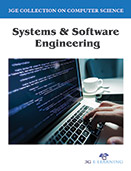
Systems engineering is about coping with complexity. Systems engineering helps avoid omissions and invalid assumptions, helps to manage real world changing issues, and produce the most efficient, economic and robust solution. The Systems engineering process delivers a better understanding of the client needs and helps program managers to manage change and configuration effectively through the project lifecycle. People are a very important aspect of software engineering and software systems. People use the system being developed, people design the system, people build the system, people maintain the system, and people pay for the system. Software engineering is as much about the organization and management of people as it is about technology. Software quality has been an issue since the early days of computer programming. Much of a software architect’s life is spent designing software systems to meet a set of quality attribute requirements. General software quality attributes include scalability, security, performance and reliability. Quality attribute requirements are part of an application’s nonfunctional requirements, which capture the many facets of how the functional requirements of an application are achieved. All but the most trivial application will have nonfunctional requirements that can be expressed in terms of quality attribute requirements. To be meaningful, quality attribute requirements must be specific about how an application should achieve a given need.
This novel edition named “Systems & Software Engineering” is packed with the concepts of systems engineering which has strong relationship with software engineering field both in the concepts and in the practical aspects. The book opens with the explanation about some important concepts in systems engineering such as definitions, characteristics, and real examples. .Many IS professionals when asked what they understand by software quality, immediately start to talk about testing. When they realize that they are limiting their understanding they include validation and verification into the formula and begin to talk about walkthroughs and reviews which are just an extension of testing. So testing is their major understanding of quality. There is a simple explanation in the text why this is needed. However, closer examination reveals that the vast majority of them are concerned with quality assurance and for most authors that means testing developed code with some references to validation and verification. This book discusses about the benefits of teaching systems engineering to software engineering students covering a wide spectrum of software processes from initial requirements elicitation through design and development to system evolution.